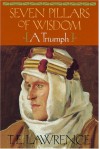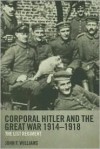Currently reading
KUDOS TO A PROGRAM THAT GAVE CANADA ITS WINGS

This book is about an air training scheme in Canada that was developed by Great Britain during the First World War to redress the alarmingly high losses it sustained in trained airmen over the Western Front in 1916. As a result of these losses, in the short run, Britain was forced to cut corners in its own training of pilots. Consequently, through the summer of 1917, many rookie pilots in the Royal Flying Corps (RFC) went into combat barely able to fly a plane, much less fight in one. The average longevity of an RFC pilot on the Western Front in early 1917 was 11 days.
In the meantime, Britain had been in negotiations with the Canadian government to establish an air training establishment in Canada. After much wrangling over cost, an agreement was reached before the end of 1916 and, with Britain underwriting "the Canadian project" (designated the Imperial Royal Flying Corps [IRFC], which was later renamed the Royal Air Force Canada [RAF-Canada] in the spring of 1918), a cadre of RFC personnel under the command of Cuthbert G. Hoare was dispatched to Canada. Hoare "would be given a free hand to set up" a training school "and command it."
Fortunately, despite many obstacles and challenges, Hoare proved to be the ideal commander. By the time of the Armistice (November 11th, 1918), more than 3,100 pilots and 130 observers had been successfully trained. Furthermore, through a reciprocal agreement Hoare helped bring about with the United States (following its entry into the war on April 6th, 1917), the IRFC/RAF-Canada had trained 456 American pilots who would later fly for the United States Army Air Service and the U.S. Navy.
What is all the more remarkable is that this air training scheme was, in little more than 6 months after its creation, up and running. The first class of trainees won their wings in May 1917. Later that year, through the reciprocal agreement, Hoare had secured land for a training base in Texas, where both Canadian and American aircrews, mechanics, and other support personnel could be trained without hindrance from the harshness of the Ontario weather during the winter of 1917-18.
The greatest value of "Dancing in the Sky" is in showing the reader how Canada (in terms of its communities in which the training program was based and the numbers of women who were given opportunities - albeit limited - to be trained as mechanics and clerical staff) became more assured of itself as a nation apart from the British Empire. In fact, "the RFC/RAF training plan kickstarted Canada into the aeronautical age. Canada was one of the first nations in the world to formally regulate aviation, licensing pilots, and certifying aircraft." There was also the beginning of airmail service in Canada in June of 1918, thanks to the RAF-Canada.
Truly an inspiring story.













